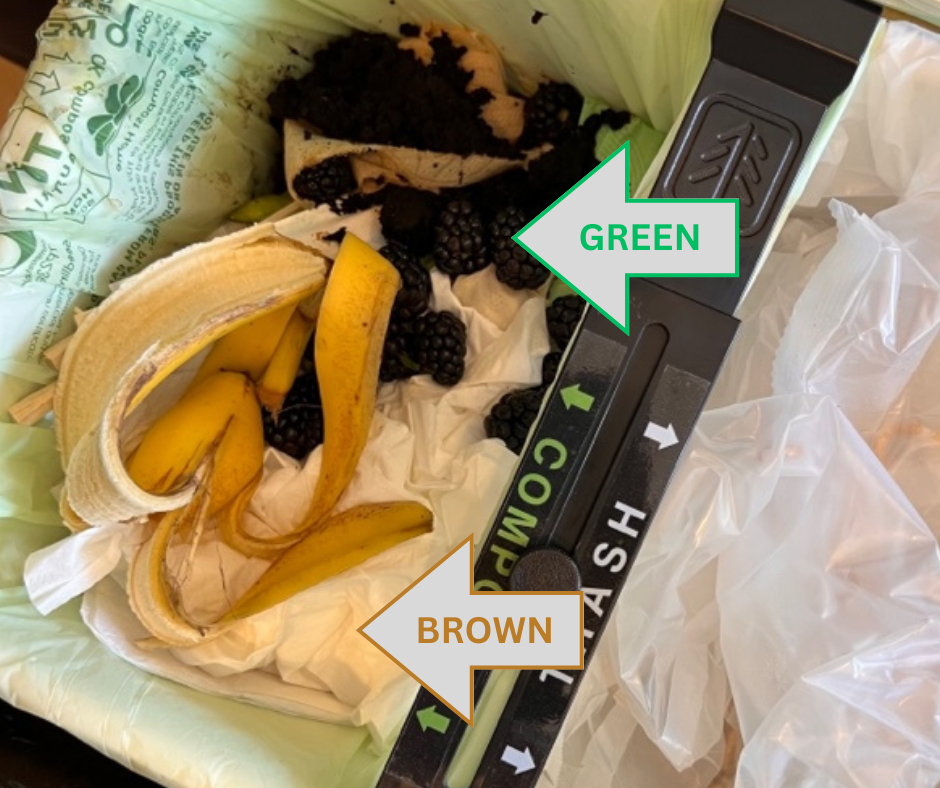When collecting kitchen compostable items, there are two essential players: “green” and “brown” materials. Including both of these items as you collect compost is important for the most successful composting collection experience.
1. Green & Brown
Green materials include kitchen scraps like fruit and vegetable peels, coffee grounds, tea bags, etc. On the other hand, brown materials encompass items like paper towels, cardboard and newspaper. A mixture of the two strikes a balance of optimal decomposition.
2. Green Materials: The Nitrogen Boost
Green materials are rich in nitrogen, a crucial element for microbial activity. Microbes break down organic matter and create heat which accelerates decomposition.
3. Brown Materials: The Carbon Connection
Brown materials, often referred to as “carbon-rich” materials help create a well-aerated and structured environment to your collected compost. It prevents the compost from becoming too wet and compacted which can lead to unpleasant smells.
4. Keeping Odors and Bugs at Bay
Brown materials act as a natural deodorizer, absorbing excess moisture and preventing the growth of odor-causing bacteria. Their carbon content helps maintain a balanced moisture level, reducing the likelihood of foul smells emanating from your kitchen compost. Brown materials also create a physical barrier and discourage fruit flies and other bugs from laying eggs in your compost. The dry, carbon rich environment isn’t conducive to breeding, helping keep your kitchen compost bug-free.
5. Recipe for Success
To achieve an optimal balance of green and brown materials, try to add an equivalent amount of green scraps to brown scraps. This carbon-to-nitrogen ratio should help your collected compost start to break down efficiently while minimizing odor and bug problems!

